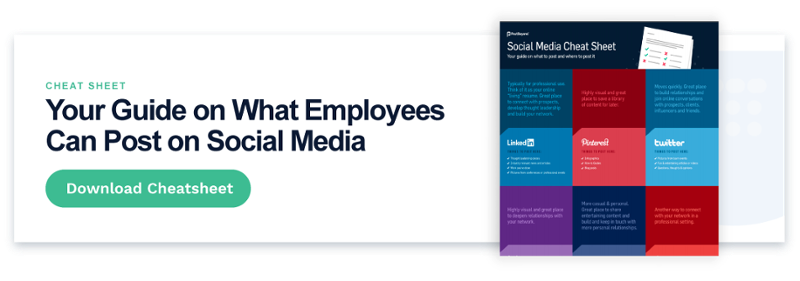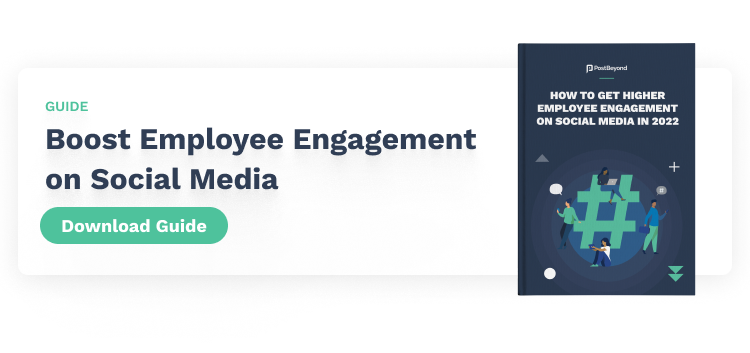With 740 million active users on LinkedIn, investing in the platform makes sense. But you need a LinkedIn content strategy that invites people to engage and share your posts. If people aren’t engaging with your content, then you’re not generating reach.
Developing a LinkedIn Content Strategy

1. Set Your Goals
Zero-in on what you’re trying to achieve. LinkedIn offers a lot of amazing paths for growth – sales, brand reach, thought leadership and more. But you need a clear map to your target destination. Otherwise, you’re going to waste a lot of time and money on detours.
What’s your goal? Social recruiting? Social selling? Brand advocacy?
It’s perfectly fine to have multiple goals, but each one needs a distinct and focused strategy.
2. Define Your Target Audience
Build a clear picture of who you’re trying to engage on LinkedIn. No matter the goal, you’ll generally start with a persona. So, understand the demographics of your market (such as location, age, etc), find the conversations they’re active in, and identify their industries.
You should also build an insight into their interests, problems and goals. These are critical details because they’ll inform how you shape your content.
3. Leverage Your Team
To generate reach on social media, you need people to engage and share content.
This is especially true on LinkedIn. If you’re strictly relying on your official brand account, you’re probably not reaching enough people to fuel momentum.
The benefit of getting others to share your content is that you’ll get exposure to their networks. Not only that, but if the people on those networks engage your content, then their contacts will see their engagement. Your reach on LinkedIn blooms outwards.
On top of that, multiple people posting your content helps create more windows for exposure. Currently, not as many people visit LinkedIn in a day as often as say Facebook or Instagram, which leaves you a narrow window to get your content seen. However, if more people share your content (especially at different times), then you increase your chances of exposure.
As a company, you might have an untapped resource for wide-scale sharing – employees. Look at leveraging employee advocacy to unlock that sharing power.
4. Create Strong Content
LinkedIn is about meriting attention. To get engagement and shares, your content needs to merit it by providing value, original insights or some other type of benefit. Having a grasp of your target audience’s problems and interests is key to ideating relevant content.
Invest in a diverse content mix of blogs, videos, infographics and other assets. However, make sure you’re focusing on people. Put people at the center of your stories as that helps you build an authentic connection with your audience.
Consider investing in user-generated content (UGC) or employee-generated content (EGC). Not only does UGC/EGC cast a spotlight on people, but it lets you create content in their voice. That is a great way to build authenticity as people trust other people more than brand accounts.
5. Build a Content Pipeline
The challenge with producing great content is producing enough of it.
So develop an efficient and scalable way to pack your editorial calendar. You can also leverage EGC to take some of the workload off your content team. The one thing you want to make sure with EGC is having clear social media guidelines for employees.
6. Post Regularly
You should be posting at least 1-5 times per day on LinkedIn. Combine the regularity with other tips – like using hashtags to enter conversations – to get more views on your LinkedIn posts.
However, you’ll only get so far with posting alone. Try getting other people (like employees) to post content as well. The more activity to create the more opportunity for exposure.
7. Measure Progress
Use data to get visibility into your efforts. The metrics you’ll need to follow depend on your goals. For example, the metrics important to social selling aren’t the same as those for say social recruiting. You’ll want to use the data to see what types of content are fueling most of your growth and identify top advocates, groups, discussions and other drivers.
Next Steps
The keys to a successful LinkedIn content strategy rest in both content and sharing. While you could control content directly, you should look at relying on employees to drive sharing. Take a look at the content and strategies that helped other companies mobilize employees to share on social.






